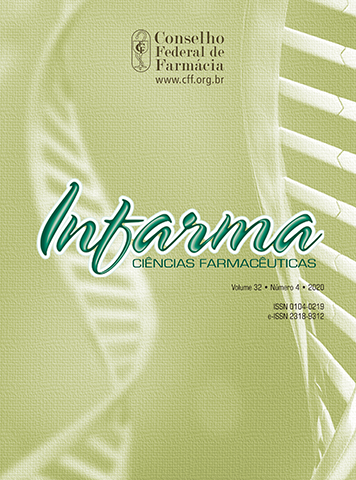SAFETY ANALYSIS OF THE IMMUNOSUPPRESSANTS USE IN RENAL FAILURE PATIENTS
DOI:
https://doi.org/10.14450/2318-9312.v32.e4.a2020.pp374-382Keywords:
clinical pharmacy, immunosuppressants, adverse drug reactionsAbstract
Acute renal failure (ARF) and chronic renal failure (CRF) are pathologies with increasing incidence recently in Brazil. According to the Brazilian Society of Nephrology (2018), the number of patients with these comorbidities has increased by approximately 200% in 16 years, with organ transplantation as an alternative treatment. One of the main post-renal transplant therapies is the use of immunosuppressants to contain graft rejection. However, the safety of this pharmacotherapy is still discussed, due to the high probability of adverse reactions occurring. This study presented and analyzed numerical data regarding the occurrence of adverse drug reaction (ADR) related to immunosuppressants used as pharmacotherapy by patients with ARF or CRF hospitalized in a University Hospital of Curitiba county, PR. It is a retrospective observational study based on the analysis of physical and electronic records of the evolution of acute or chronic renal insufficiency patients through active search in immunosuppressive dispensing tables. This study included records of 162 patients, and 118 of them had one or more possible immunosuppressive reactions. We observed that the most prevalent ADR in the study was “opportunistic infection” and the lowest prevalence “hypoalbuminemia.” For better result reliability, Naranjo’s algorithm was applied, where “infection” remained relevant in 26% of its cases classified by the algorithm as “probable.” Given the results, the importance of the clinical pharmacist in the optimization of the immunosuppressive pharmacotherapy
used by the renal insufficient patients of the hospital in question is observed.
Downloads
Published
How to Cite
Issue
Section
License
Authors who publish in this journal agree to the following terms:
- Authors retain the copyright and grant the journal the right of first publication, with the work simultaneously licensed under the Licença Creative Commons Attribution which allows the sharing of work with acknowledgment of authorship and initial publication in this journal.
- Authors are authorized to take additional contracts separately, for non-exclusive distribution of the version of the work published in this journal (e.g. publish in institutional repository or as a book chapter), with acknowledgment of authorship and initial publication in this journal.
- Authors are allowed and encouraged to publish and distribute their work online (e.g. in institutional repositories or on their personal page) at any point before or during the editorial process, as this can generate productive changes as well as increase the impact and Citation of published work (See O Efeito do Acesso Livre ).


